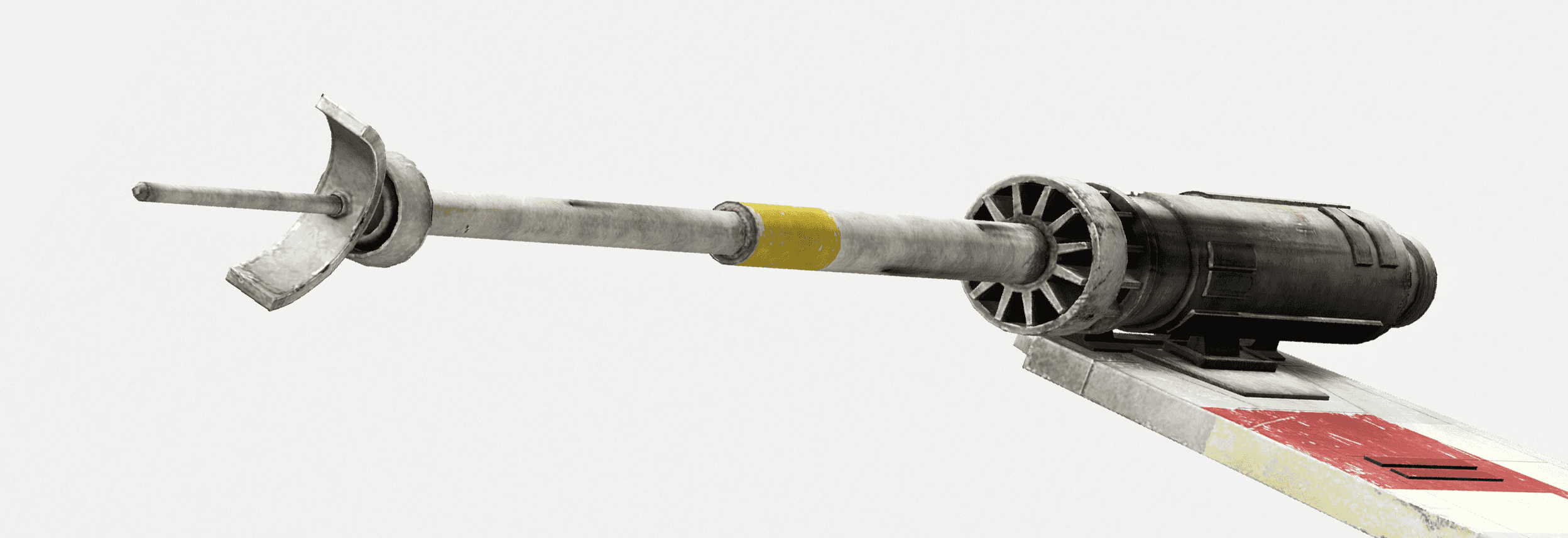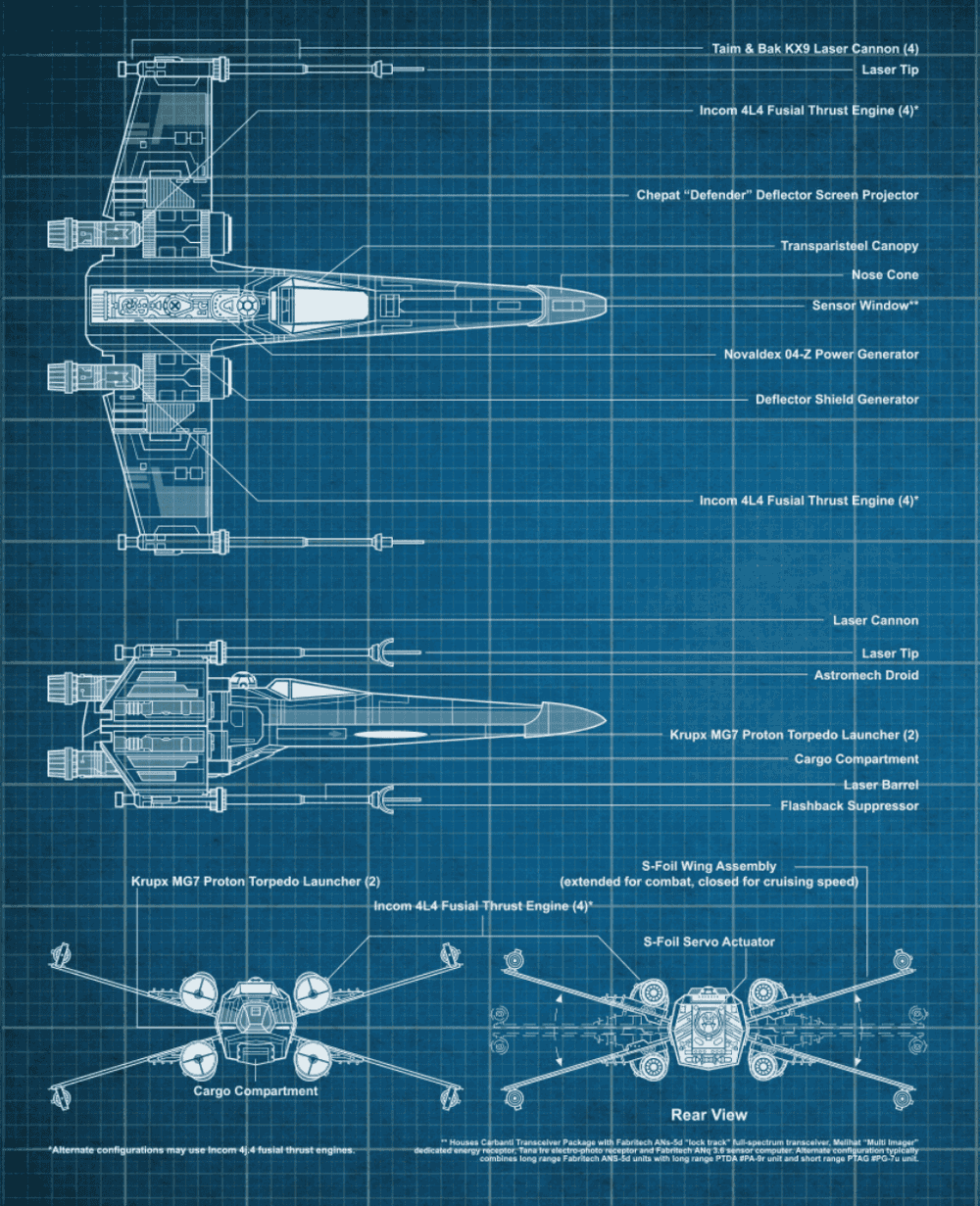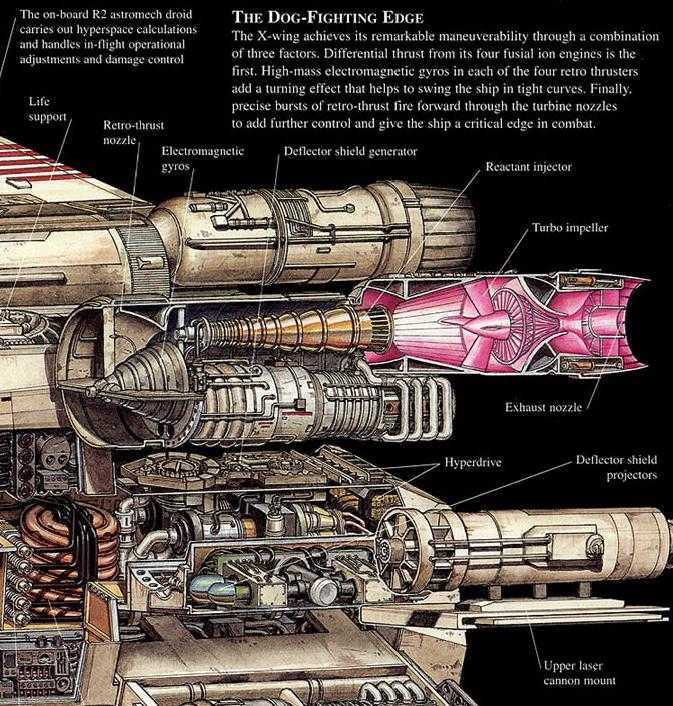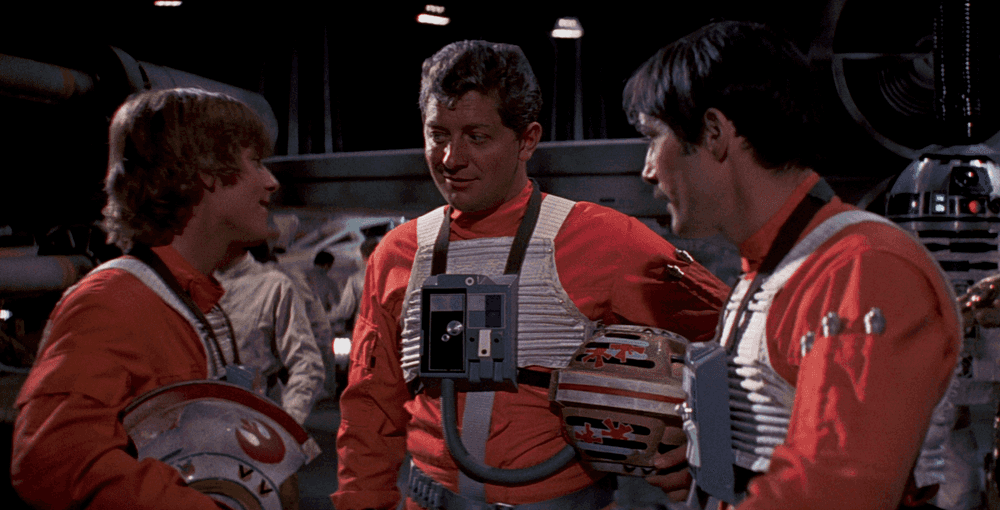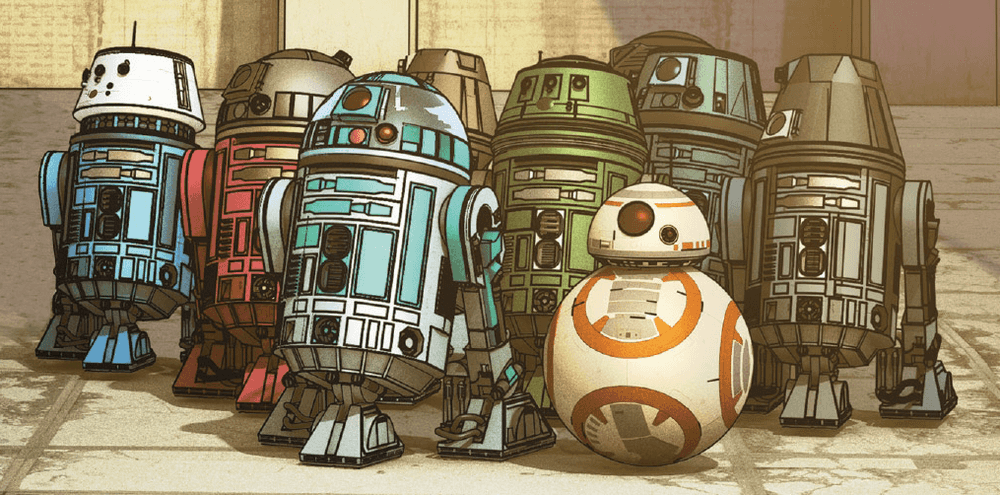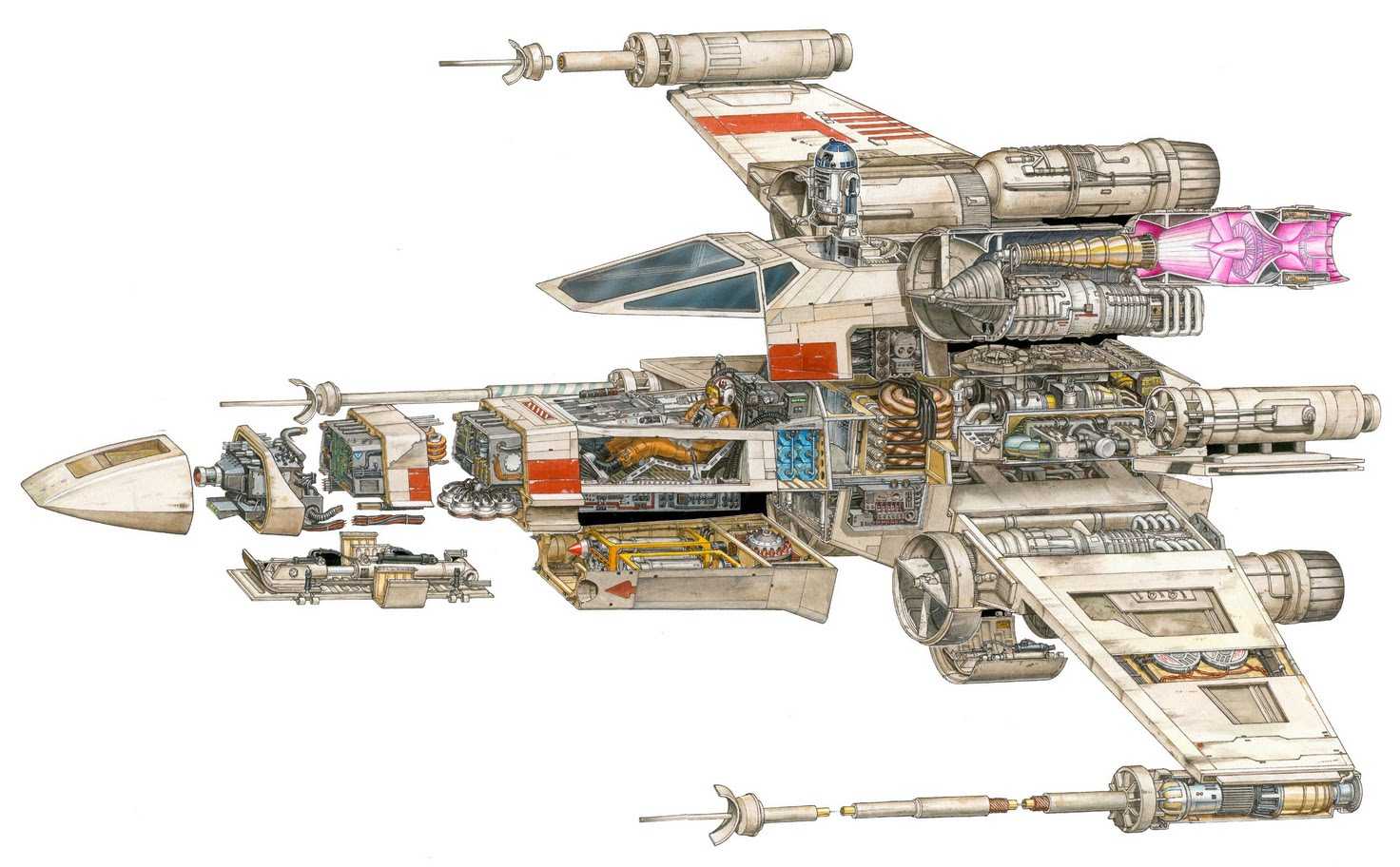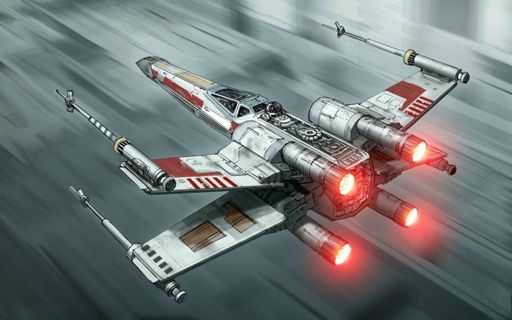Schematics
The T-65B X-wing starfighter was manufactured by Incom Corporation. It was designed to excel in all aspects of starfighter combat, being highly maneuverable and heavily shielded, with a small profile that made it harder to hit. Unlike other starfighters the X-wing could excel in atmospheric flight. This included outmaneuvering the TIE fighter, which was otherwise faster and more maneuverable than the X-wing in space.
It had two pairs of wing-like strike foils, or S-foils, mounted at the rear of the craft on opposite sides. Normally, the foils on each side locked in place flush against each other; during combat, however, the foils were folded out. This gave the craft its distinctive "X"-like appearance when viewed from the front or rear. The S-foils were controlled by an S-foil servo actuator located in the back of the starfighter. With the S-foils open in attack position, the craft had a greater spread of fire as opposed to whilst shut.

